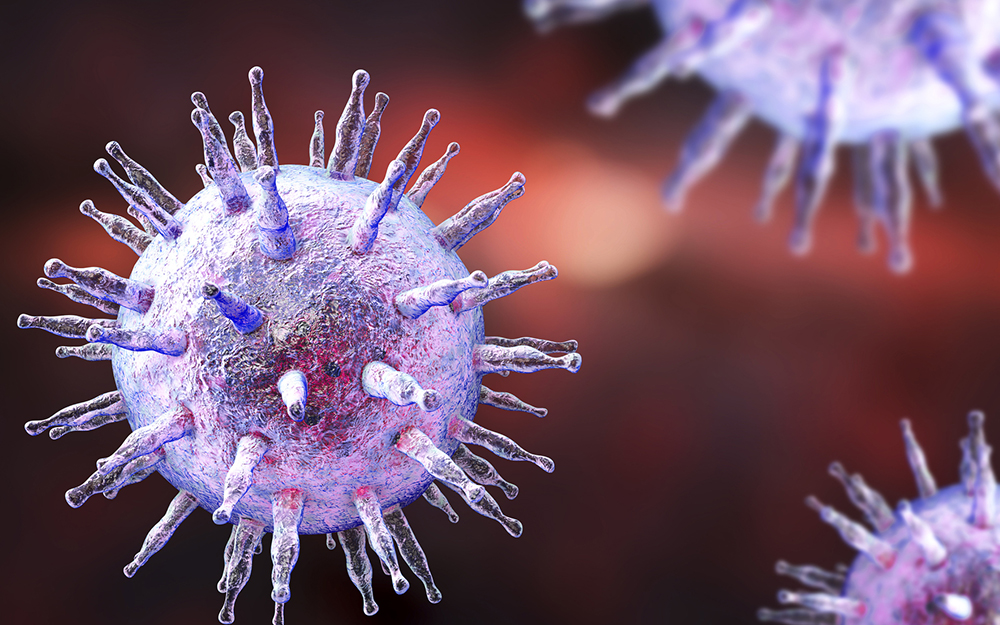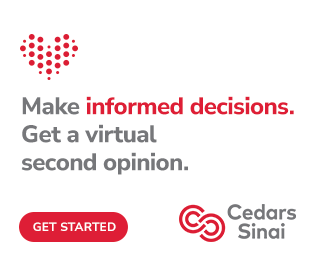Cedars-Sinai Blog
Big Data, Big Ideas: The Case of Multiple Sclerosis
Mar 07, 2022 Jasmine Aimaq

A recent study on multiple sclerosis (MS) may hold the key to eliminating the disease some day. If that sounds dramatic, it is.
The story swept through the MS community and made it to the front pages of major news outlets. The gist is this: the Epstein-Barr virus (EBV) plays an essential role in the development of MS. Why is that groundbreaking?
"Because it suggests that MS could be preventable if scientists develop a vaccine against EBV," says Dr. Nancy Sicotte, Women's Guild Distinguished Chair in Neurology and director of the Multiple Sclerosis and Neuroimmunology Program at Cedars-Sinai.
The idea that the EBV is associated with MS isn't new. "We have known for years about a correlation between the two," says Dr. Sicotte, adding that no one is arguing that EBV is the only cause of MS, an autoimmune disease that currently afflicts around one million Americans.
"Other factors matter too, such as genetics and your levels of vitamin D, so it's important not to over-interpret the findings," she cautions. "But this research does imply that if you never get infected with EBV, you'll never get MS."
"Without big data, it would have been impossible to reach these conclusions with any degree of confidence."
Strength in numbers
If the link between Epstein-Barr virus infection and MS was already known, why did it take so long to understand the connection? For one thing, EBV is ubiquitous. It's present in 95% of the population and is best known for causing mononucleosis.
"Mono" can cause flu-like symptoms, especially in teens and young adults, and usually isn't serious. The vast majority of people who are infected with EBV don't end up with MS, which is a relatively rare disease. No one could confirm a causal relationship.
The study, which was published in Science, comes closer to doing so for one reason: it had over 10 million participants. "The significance of a sample size of 10 million cannot be overstated," says Dr. Sicotte.
Study conclusions
The huge sample was possible because of the size of a military database. Over a period of 20 years, starting in 1993, the Army obtained blood samples from its recruits for routine screening for HIV. Out of more than 10 million active duty members, 955 eventually went on to develop MS.
The samples not only revealed the presence of EBV antibodies in these future MS patients, but also showed a wide range of other markers that confirmed a powerful association between having the virus and developing MS. After an exhaustive analysis, the investigators concluded that the increased risk of MS among those who'd been infected with EBV was so strong that it could not be attributed to anything else.
"They are arguing that the link must be causal, meaning that MS does not occur in people who have never had EBV," says Dr. Sicotte, adding that some observers are skeptical and don't think EBV can account for every single case of MS. "Regardless, the study presents the most persuasive evidence to date that EBV is a leading cause of MS," she says.

Nancy L. Sicotte, MD
The promise of big data
The study is also an important example of next-level data collection and analysis. "Without big data, it would have been impossible to reach these conclusions with any degree of confidence," says Dr. Sicotte.
Big data is one of the most important trends in healthcare, and may hold unprecedented promise for the prevention, diagnosis and treatment or a range of medical conditions. The term big data is used to describe data sets that are too large or complex to be handled by conventional data-processing software, and that require advanced technologies such as artificial intelligence and machine learning.
Cedars-Sinai researchers have been using big data and next-level tech from the start. In one project, Dr. Sicotte and her colleagues are gathering blood samples, following the participants for two years, and testing them for a range of biomarkers that could help establish connections between specific markers and certain neurological diseases.
Having a large number of samples is key. "If we identify a marker in someone's blood that's linked to a medical condition, and we see that link over and over again, in tens of thousands of people and more, we can learn more than our predecessors could ever have imagined."
The promise of biobanks
These biobanks, as troves of biological samples or health information are called, may have uses beyond supporting current research. "Since we can store the samples, scientists may be able to use them in the future, in the context of new theories and new research, and discover biomarkers we don't even know about today," she says.
Biobanks offer immense benefits to researchers, and therefore to patients. Some are specific to a particular disease, such as MS or cancer. Other biobanks are broader, containing samples and information from people in a specific population group or area.
Biobanks reduce or eliminate the need to recruit new participants for every study, because samples and corresponding medical information are available in one place. Studies can be performed faster and on a larger scale, leading to discoveries that can translate into real-world help for patients on a shorter timeline.
"We are so grateful to volunteers who contribute to biobanks," says Dr. Sicotte. "We don’t yet have all the answers, and nothing is for certain, but if MS does become a preventable disease, we will have biobanks and big data to thank."


